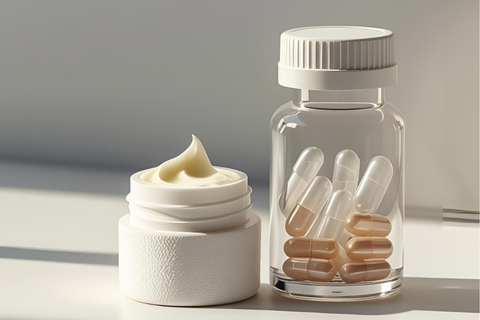Vesanoid (oral tretinoin) is a unique and powerful medication used in very specific cancer treatment scenarios, and it carries with it a host of intriguing and sometimes bizarre facts. Whether you’re a patient, caregiver, or simply curious about this niche drug, here’s a comprehensive and compelling dive into the most interesting things to know about Vesanoid.
- It’s Vitamin A… Supercharged
Vesanoid is a form of all-trans retinoic acid (ATRA)—a derivative of vitamin A. Vesanoid is a purified, high-dose drug form of all-trans retinoic acid (ATRA)—a compound your body naturally makes from vitamin A to support functions like vision and immune health. While ATRA is normally part of healthy cell growth, Vesanoid uses it in a concentrated form to help treat acute promyelocytic leukemia (APL) by encouraging cancer cells to mature into normal cells. But unlike over-the-counter vitamin A supplements, Vesanoid is a powerful prescription drug used to force cancer cells to mature and die. This mechanism makes it remarkably different from traditional chemotherapy, which typically aims to kill cancer cells directly.
- It’s Not for Acne (But It’s a Cousin to Retin-A)
Most people associate tretinoin with topical creams like Retin-A, used for acne or wrinkles. Vesanoid, however, is oral tretinoin, and it’s prescribed to treat a rare form of leukemia called acute promyelocytic leukemia (APL). Despite being chemically similar to topical products, the effects of oral tretinoin are systemic and can be both life-saving and intense.
Get Inmediate Copay Assistance
- It Induces Cancer Cell “Maturation”
APL involves immature white blood cells (promyelocytes) that fail to mature properly. Vesanoid doesn’t kill these cells—it reprograms them. It forces them to differentiate and mature, stopping their uncontrolled growth. It’s one of the few cancer drugs that works by encouraging cell differentiation rather than cell death.
- It Helped Revolutionize APL Treatment
Before Vesanoid, APL was one of the deadliest forms of leukemia. With the introduction of ATRA-based therapy in the 1990s, APL went from a fatal diagnosis to one of the most curable leukemias—with cure rates of over 90% when combined with arsenic trioxide or chemotherapy.
- A Real Risk of “Retinoic Acid Syndrome”
One of the strangest and most dangerous side effects is differentiation syndrome (formerly known as retinoic acid syndrome). This condition can cause:
- Rapid weight gain
- Difficulty breathing
- Low blood pressure
- Organ dysfunction
- Fluid buildup around the lungs or heart
It’s a medical emergency, yet paradoxically, it means the drug is working as intended—pushing immature cells to mature en masse and triggering an inflammatory response.
- It Can Make Your Skin Glow… or Peel
Even though it’s taken orally, Vesanoid can have dermatologic side effects similar to the topical version:
- Skin redness
- Peeling
- Dry lips and mouth
- Increased sensitivity to sunlight
Patients often report needing extra moisturizers and SPF during treatment.
- It’s Extremely Dangerous in Pregnancy
Like other retinoids, Vesanoid is highly teratogenic—meaning it can cause severe birth defects. Patients capable of pregnancy must use two forms of contraception, and pregnancy tests are required before and during treatment. This safety measure is similar to what’s required for Accutane (another retinoid).
- The Capsule Is Oil-Based
Each Vesanoid capsule contains tretinoin dissolved in soybean oil—a necessity because the drug is fat-soluble, not water-soluble. This design helps your body absorb it more efficiently, but it also means patients with soy allergies should speak with their doctor.
- It May Alter Your Lipids and Liver
Vesanoid is known to cause elevated cholesterol and triglycerides in a matter of days. It can also raise liver enzymes, which is why frequent blood tests are part of the treatment plan. Liver function and lipid panels are closely monitored to avoid complications.
Need Vesanoid Copay Assistance?
- There’s No Generic Named “Tretinoin” for the Oral Form
Despite its widespread use in dermatology as a topical cream, there is no generic “tretinoin” approved for oral use in the U.S. specifically for APL under the same name. When prescribed for APL, it is almost always referred to as Vesanoid, even when dispensed as a generic, due to the specialized dosing and indications.
- You Might Get a Headache… Literally
Another quirky side effect? Severe, persistent headaches due to pseudotumor cerebri (a buildup of pressure around the brain). It mimics the symptoms of a brain tumor, including vision changes and nausea, but without any actual tumor present.
- It’s Not a Lifelong Drug
Vesanoid is not used indefinitely. It’s prescribed for a fixed course (usually around 90 days) as part of induction and consolidation therapy. The goal is complete remission—not ongoing maintenance.
13. Topical Tretinoin Works Locally — Oral Tretinoin Affects the Whole Body
Topical tretinoin is applied directly to the skin, where it works only on the area it’s applied to, helping to unclog pores, boost collagen, and speed up skin cell turnover. Oral tretinoin, on the other hand, is taken by mouth and circulates throughout the entire body, reaching the blood, bone marrow, and organs to treat systemic disease like acute promyelocytic leukemia (APL). This difference in how the drug is delivered leads to very different side effect profiles, uses, and risks.
Vesanoid is a fascinating example of how a vitamin derivative evolved into a lifesaving oncology treatment. Its unique mechanism, unusual side effects, and powerful impact on survival rates make it one of the more interesting drugs in modern medicine.
If you’re a patient or caregiver navigating APL treatment, make sure you’re working closely with your oncologist and pharmacist. Specialty pharmacies like QuickRx can help coordinate access to this complex medication and support you throughout your treatment journey.


